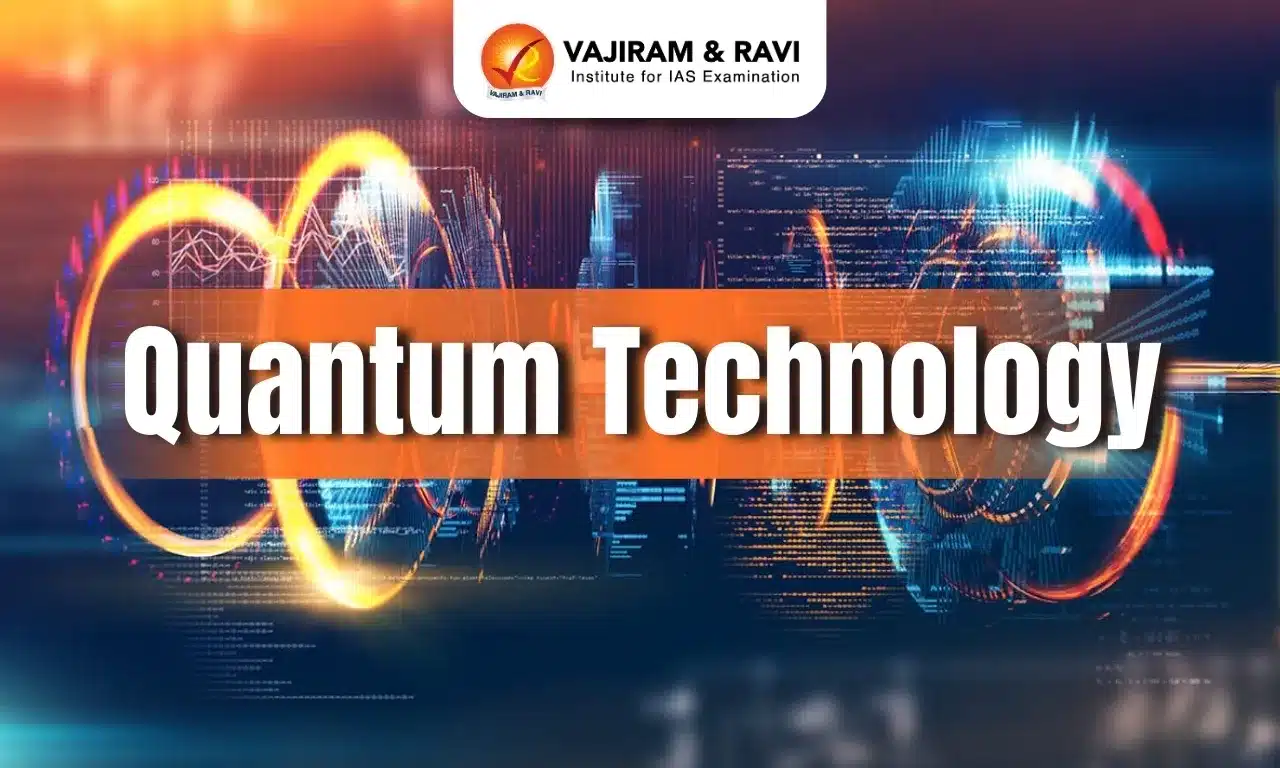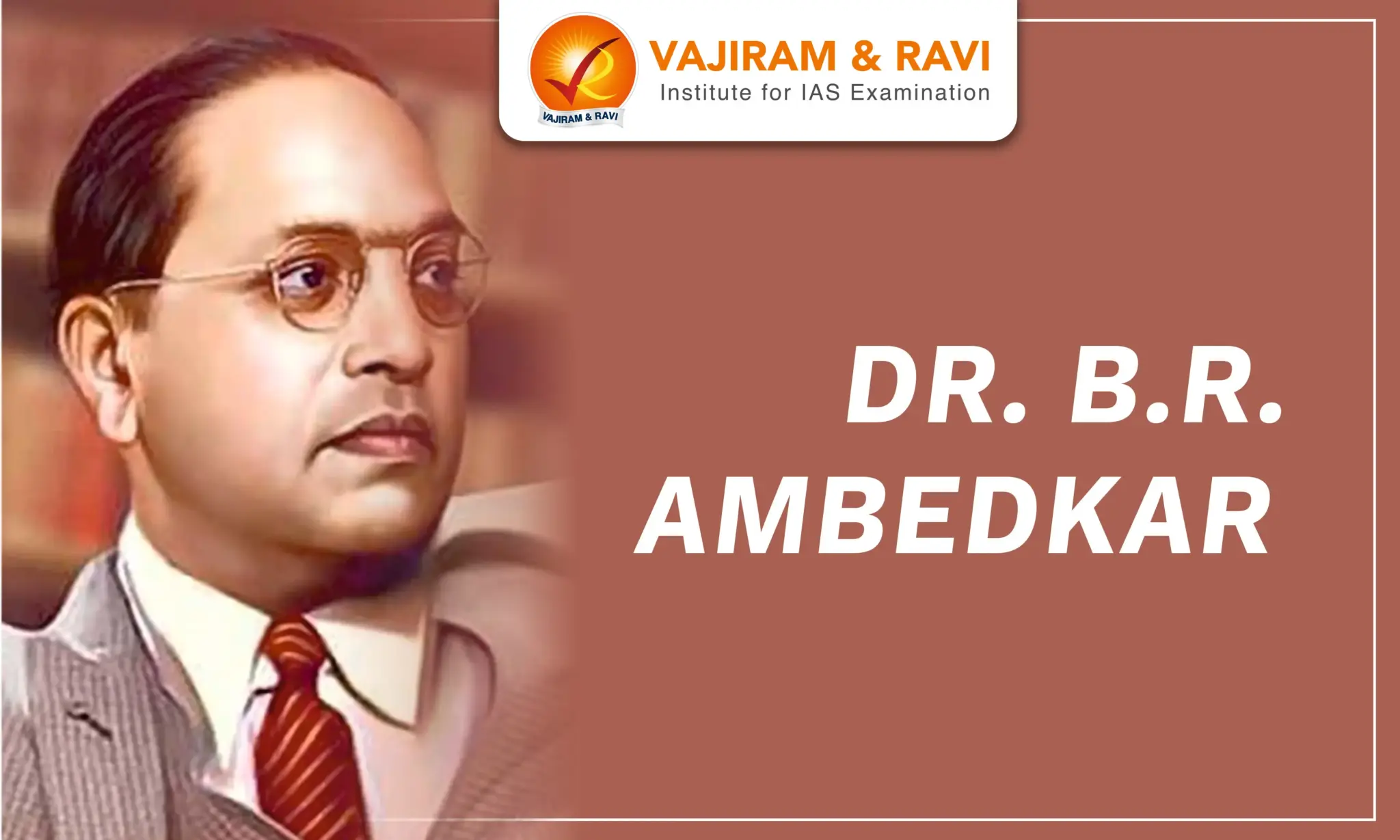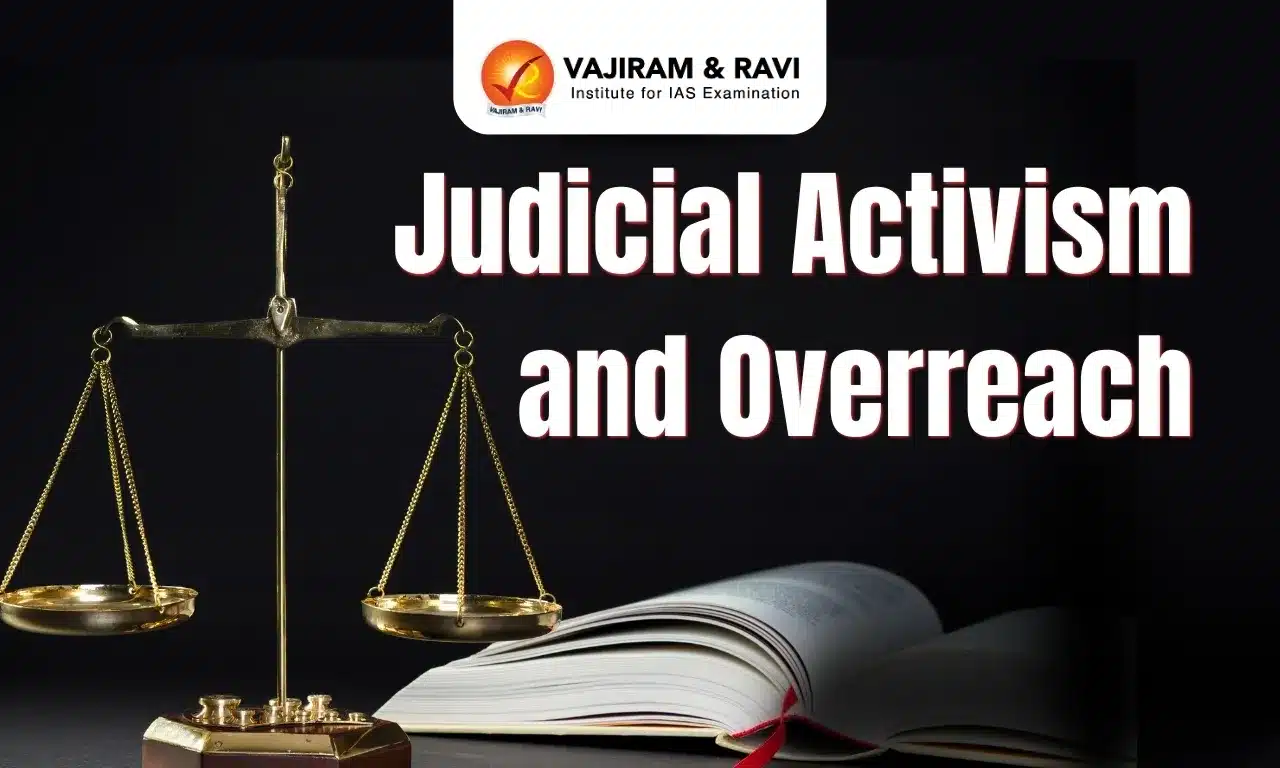Quantum Technology harnesses the principles of Quantum mechanics to describe the nature of fundamental particles at the scale of atoms and elementary particles. Unique behaviours and properties of subatomic particles such as superposition and entanglement are harnessed to develop quantum technology.
It is one of the most researched areas by Governments and various private players involved in the development of quantum technology. It can broadly be divided into various verticals such as Quantum Computing, Quantum Communications, Quantum Sensors and Quantum Materials.
Working of Quantum Technology
A new probabilistic paradigm of quantum mechanics led the way to a better understanding of some key properties of quantum particles such as ‘superposition’ and ‘entanglement, which underlines the quantum technologies.
| Quantum Superposition |
- Ability of particles to exist in multiple possible quantum states. - This is because of the properties of particles, atoms, electrons, etc to behave like a wave as well. - Similar to the ripples observed in the ponds, in which one wave superimposes another in the way and gets mixed. |
| Quantum Entanglement |
- Quantum Entanglement refers to a situation in which particles are interlinked and can not be described independently. - Any changes in quantum states will be communicated simultaneously to another particle at a distance. - Quantum algorithms are designed to take advantage of this relationship (entanglement) to solve complex problems. |
| Quantum teleportation | - Quantum teleportation is the transfer of an unknown quantum state over long distances. |
| Quantum interference |
- It is the physical phenomenon of superposition of two or more waves giving rise to an enhanced wave. - It can be of two types: constructive and destructive Interferences.
|
| Observance |
- It is a process of observing and measuring quantum states. - Observance results in the collapse of the quantum property. |
Applications of Quantum Technology
Quantum Technology has unfolded new frontiers with wide-spread applications. The key domains where Quantum technology is applied are described below.
- Quantum Communication: Applying the properties of quantum physics, provides better security and long-distance communications. Quantum communication provides two advantages for security.
- Inconventional digital communication, messages are decrypted and encrypted using keys and transmitted in classical binary bits (0 or 1). Quantum key distribution (QKD) instead uses encryption keys that are encoded and transmitted using qubits, thereby making them more difficult to break.
- Second, qubits are incredibly sensitive. Any attempt to disrupt them or even observe them will lead to collapse.
- Quantum Simulation: To understand large quantum systems or solve complex problems, there is a need to run Quantum Simulations.
- If a quantum system is simulated using another quantum system, it is easier to control and study.
- A quantum simulator doesn’t need to “learn” quantum mechanics as it already works by the same rules.
- Alzheimers, Parkinsons, etc. diseases have one thing in common i.e., misfolded protein molecules. Quantum simulations can help us understand protein folding as well as help cure these diseases.
- Quantum simulations are crucial for developing high-temperature superconductors.
- Quantum Computation: It uses quantum physics to solve problems at speeds not possible with classical computers. While conventional computers use “bits”, the basis of quantum computing is the “qubit”.
- Superposition allows a quantum computer to perform many operations simultaneously and millions of times faster than classical computers.
- Quantum Sensing and Metrology: Quantum Sensing is an advanced sensor technology that analyses the changes in motion, and electric and magnetic fields at the atomic level. It allows for extremely precise measurements.
- It has a wide range of applications, including healthcare and medical research, earth observation, early detection of natural calamities, environmental monitoring, construction, energy, navigation, and defence.
- Quantum materials: They are used to create solar cells and energy-efficient devices such as batteries and diagnostic devices in health industries- such as sensors and imaging devices.
- Example- Fluorescent quantum dots can be used for multicolour bioimaging and labelling specific cellular proteins.
Limitations of Quantum Technology
Although the benefits of quantum technology are versatile and promising, there are still following obstacles.
- Output observance: This means that data corruption may happen if output information is retrieved after a quantum computation process is completed.
- Decoherence: During the computation phase of a quantum calculation, the slightest disturbance in a quantum system (for example, photon or wave of EM radiation) causes the quantum computation to collapse, this is known as De-coherence.
- Security threat: An adversary with quantum decryption capabilities can theoretically access encrypted information with ease, putting most current communications infrastructure at risk of exploitation.
- Error correction: It is critical in quantum computing, where even a single error in calculation can cause the validity of the entire computation to collapse.
- Quantum gates: High-end computing applications face the limitation of high qubits and high quantum gates.
Quantum Technology in India
Acknowledging the potential of quantum computing, the Indian government has taken the following steps to promote an innovative ecosystem of Quantum Technology in India.
- National Quantum Mission: In 2023, this mission was approved by the government aiming to seed, nurture and scale up scientific and industrial research and create a vibrant and innovative ecosystem in Quantum Technology (QT) to accelerate QT-led economic growth and make India one of the leading nations in Quantum Technologies and Applications (QTA).
- Objectives:
- To develop quantum computers with 50-1000 qubits in 8 years on various platforms such as superconducting and photonic technology.
- To develop secure Satellite-based quantum communications between ground stations over 2000 kilometres range within India.
- To develop secure long-distance quantum communications with other countries.
- To develop inter-city quantum key distribution over a 2000 km range as well as multi-node Quantum networks.
- Focus:
- The focus of the mission would be on the development of magnetometers with high sensitivity in Atomic Clocks and atomic systems for precision timing, communications and navigation.
- And on the design and synthesis of various quantum materials such as superconductors, topological materials and novel semiconductor structures.
- Thematic Hubs (T-Hubs): It will be set up in top academic and National institutes in the domains of quantum Computing, Quantum Communication, Quantum Sensing and metrology and Quantum Materials and devices.
- Objectives:
- Quantum research facility: The Indian Army established the Quantum Lab at the Military College of Telecommunication Engineering, Madhya Pradesh to spearhead research and training in the quantum field.
- QuEST: The Department of Science and Technology has launched the QuEST (Quantum-Enabled Science and Technology) initiative to lay out research facilities in the field of quantum technology.
- QSimToolkit: It is an indigenously developed toolkit that helps in learning and understanding the practical aspects of Quantum Computer to researchers and students
- It provides a platform to acquire the skills of Quantum Code as well as designing real quantum hardware.
- Centre for Development of Telematics (C-DOT): a premier telecom research and development organization of India, has developed products in Quantum Key Distribution (QKD) and is continuing to pursue research in this area.
- Involvement of private sectors: Tech giants such as Google and IBM have dedicated programmes for quantum computing and its applications in India.
- Indian startups such as BosonQ, QRDLab and QpiAI, are also involved in developing quantum-based applications.
Last updated on November, 2025
→ Check out the latest UPSC Syllabus 2026 here.
→ Join Vajiram & Ravi’s Interview Guidance Programme for expert help to crack your final UPSC stage.
→ UPSC Mains Result 2025 is now out.
→ UPSC Notification 2026 is scheduled to be released on January 14, 2026.
→ UPSC Calendar 2026 is released on 15th May, 2025.
→ The UPSC Vacancy 2025 were released 1129, out of which 979 were for UPSC CSE and remaining 150 are for UPSC IFoS.
→ UPSC Prelims 2026 will be conducted on 24th May, 2026 & UPSC Mains 2026 will be conducted on 21st August 2026.
→ The UPSC Selection Process is of 3 stages-Prelims, Mains and Interview.
→ UPSC Result 2024 is released with latest UPSC Marksheet 2024. Check Now!
→ UPSC Prelims Result 2025 is out now for the CSE held on 25 May 2025.
→ UPSC Toppers List 2024 is released now. Shakti Dubey is UPSC AIR 1 2024 Topper.
→ UPSC Prelims Question Paper 2025 and Unofficial Prelims Answer Key 2025 are available now.
→ UPSC Mains Question Paper 2025 is out for Essay, GS 1, 2, 3 & GS 4.
→ UPSC Mains Indian Language Question Paper 2025 is now out.
→ UPSC Mains Optional Question Paper 2025 is now out.
→ Also check Best IAS Coaching in Delhi
Quantum Technology FAQs
Q1. Which property of quantum mechanics is harnessed in the development of quantum technology?+
Q2. What is a qubit?+
Q3. What is quantum key distribution?+
Q4. What is quantum sensing?+
Q5. What are the challenges associated with quantum computing?What are the challenges associated with quantum computing?+
Tags: quantum technology quest

















